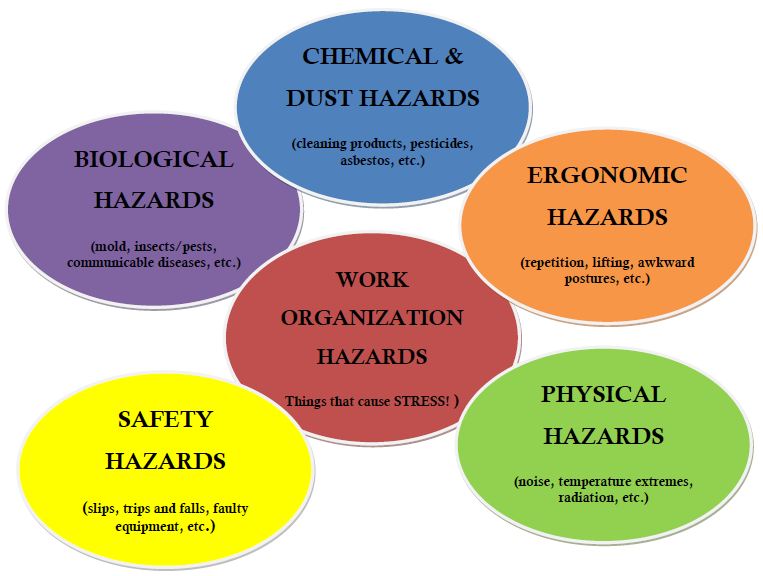Hazards:
Introduction:
Hazards exist in every workplace, but how do you know which ones have the most potential to harm workers? By identifying hazards at your workplace, you will be better prepared to control or eliminate them and prevent accidents, injuries, property damage and downtime.
Firstly, a key step in any safety protocol is to conduct a thorough hazard assessment of all work environments and equipment. Before getting started with the list below, we encourage you to download a copy of our Hazard Assessment Guide. You can walk through the steps necessary to set up your own hazard assessment, and print out our supplied blank worksheet for your own workplace hazard assessment
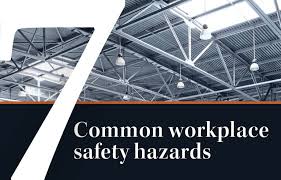
In a hazard assessment, it is important to be as thorough as possible because after all, you can’t protect your workers against hazards you are unaware of. Avoid blind spots in your workplace safety procedures by taking into consideration these six main categories of workplace hazards.
The meaning of the word hazard can be confusing. Often dictionaries do not give specific definitions or combine it with the term "risk". For example, one dictionary defines hazard as "a danger or risk" which helps explain why many people use the terms interchangeably.
There are many definitions for hazard but the most common definition when talking about workplace health and safety is:
A hazard is any source of potential damage, harm or adverse health effects on something or someone.
Harm - physical injury or damage to health.
Hazard - a potential source of harm to a worker.
Basically, a hazard is the potential for harm or an adverse effect (for example, to people as health effects, to organisations as property or equipment losses, or to the environment).
Sometimes the resulting harm is referred to as the hazard instead of the actual source of the hazard. For example, the disease tuberculosis (TB) might be called a "hazard" by some but, in general, the TB-causing bacteria (Mycobacterium tuberculosis) would be considered the "hazard" or "hazardous biological agent".
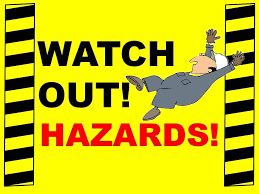
Types of Hazards:
A common way to classify hazards is by category:
- biological - bacteria, viruses, insects, plants, birds, animals, and humans, etc.,
- chemical - depends on the physical, chemical and toxic properties of the chemical,
- ergonomic - repetitive movements, improper set up of workstation, poor design of equipment, workstation design, (postural) or workflow, manual handling, repetitive movement.etc.,
- physical - Slippery floors, objects in walkways, unsafe or misused machinery, excessive noise, poor lighting, fire. radiation, magnetic fields, pressure extremes (high pressure or vacuum), noise, etc.,
- Psychological - Shift work, workload, dealing with the public, harassment, discrimination, threat of danger, constant low-level noise, stress.stress, violence, etc.,
- safety - slipping/tripping hazards, inappropriate machine guarding, equipment malfunctions or breakdowns.
Biological Hazard: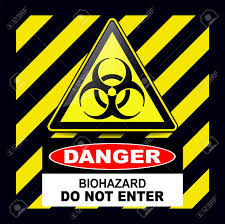
Wastes from hospitals and research facilities may contain disease-causing organisms that could infect site personnel. Like chemical hazards, etiologic agents may be dispersed in the environment via water and wind. Other biologic hazards that may be present at a hazardous waste site include poisonous plants, insects, animals, and indigenous pathogens. Protective clothing and respiratory equipment can help reduce the chances of exposure. Thorough washing of any exposed body parts and equipment will help protect against infection.
Types of things you may be exposed to include:
- Blood and other body fluids
- Fungi/mold
- Bacteria and viruses
- Plants
- Insect bites
- Animal and bird droppings
Physical Hazard:.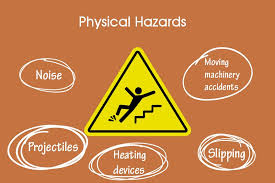
Are factors within the environment that can harm the body without necessarily touching it.
Physical Hazards include:
- Radiation: including ionising, nonionizing (EMF’s, microwaves, radio waves, etc.)
- High exposure to sunlight/ultraviolet rays
- Temperature extremes – hot and cold
- Constant loud noise
Ergonomics Hazards:
Occur when the type of work, body positions and working conditions put strain on your body. They are the hardest to spot since you don’t always immediately notice the strain on your body or the harm that these hazards pose. Short term exposure may result in “sore muscles” the next day or in the days following exposure, but long-term exposure can result in serious long-term illnesses.
Ergonomic Hazards include: 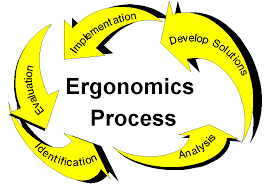
- Improperly adjusted workstations and chairs
- Frequent lifting
- Poor posture
- Awkward movements, especially if they are repetitive
- Repeating the same movements over and over
- Having to use too much force, especially if you have to do it frequently
- Vibration
Chemical Hazards: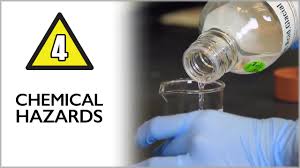
Are present when a worker is exposed to any chemical preparation in the workplace in any form (solid, liquid or gas). Some are safer than others, but to some workers who are more sensitive to chemicals, even common solutions can cause illness, skin irritation, or breathing problems.
Beware of:
- Liquids like cleaning products, paints, acids, solvents – ESPECIALLY if chemicals are in an unlabelled container!
- Vapours and fumes that come from welding or exposure to solvents
- Gases like acetylene, propane, carbon monoxide and helium
- Flammable materials like gasoline, solvents, and explosive chemicals.
- Pesticides
Safety Hazards:
These are the most common and will be present in most workplaces at one time or another. They include unsafe conditions that can cause injury, illness and death.
Safety Hazards include:
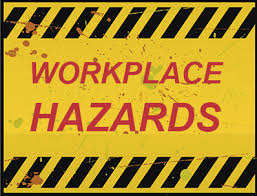
- Spills on floors or tripping hazards, such as blocked aisles or cords running across the floor
- Working from heights, including ladders, scaffolds, roofs, or any raised work area
- Unguarded machinery and moving machinery parts; guards removed or moving parts that a worker can accidentally touch
- Electrical hazards like frayed cords, missing ground pins, improper wiring
- Confined spaces
- Machinery-related hazards (lockout/tag out, boiler safety, forklifts, etc
Some safety hazards are a function of the work itself. For example, heavy equipment creates an
additional hazard for workers in the vicinity of the operating equipment. Protective equipment can
impair a worker's agility, hearing, and vision, which can result in an increased risk of an accident.
Accidents involving physical hazards can directly injure workers and can create additional
hazards, for example, increased chemical exposure due to damaged protective equipment, or
danger of explosion caused by the mixing of chemicals. Site personnel should constantly look
out for potential safety hazards, and should immediately inform their supervisors of any new
hazards so that mitigate action can be taken.
WORK ORGANISATION HAZARDS:
Hazards or stress that cause stress (short term effects) and strain (long-term effects). These are the hazards associated with workplace issues such as workload, lack of control and/or respect, etc.
Examples of work organisation hazards include:
- Workload demands
- Workplace violence
- Intensity and/or pace
- Respect (or lack of)
- Flexibility
- Control or say about things
- Social support/relations
- Sexual harassment
Managing Hazards
Common ways of managing hazards are shown below:
Step 1 Codes of practice, policies and procedures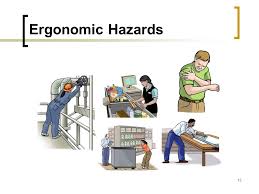
- Responsibility of organisations
- Must be compliant with the various WHS Acts
- Should involve employees on a cooperative basis
Step 2 Workplace method statements
- Written in cooperation with employees
- Must be compliant with various WHS Acts
Step 3 Work safe instructions
- Initiated by organisation with cooperation of employees
- Must be compliant with the various WHS Acts
- Must be followed by employees
Step 4 Wearing of protective clothing or equipment: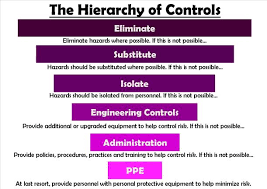
- Provided by organisation
- Must be compliant with the various WHS Acts
- Must be worn by employees as directed by management.
Step 5 Hazard and risk management
Senior management must:
- ensure that legislative requirements are complied with
- provide adequate funding for implementing safe workplace strategies
- work in cooperation with others to provide a safe workplace
- liaise with relevant personnel such as unions supervisors, WHS committees, WHS representatives
- lead by example.
Employees must:
- observe established safe work practices and procedure
- be involved in the identification of various substances or chemicals
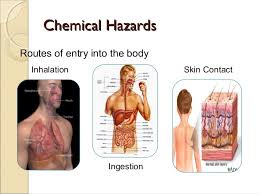
- be proactive in WHS meetings or other communication opportunities
- report any situation that involves risk or hazard to the appropriate person.
Step 6 Incident or accident report :
- Accident or incident report prepared on workplace checklist
- Management inspects accident or incident area
- Management evaluates the outcome of the investigation and makes recommendations
- The report tabulates inspection findings which include employee input and enables management to determine appropriate action.
Click the following links to know and downloads about hazard

Tool box talk - Hazard Identification
Tool box talk - Hazard Recognition
Power point presentation - Occupational Hazards
